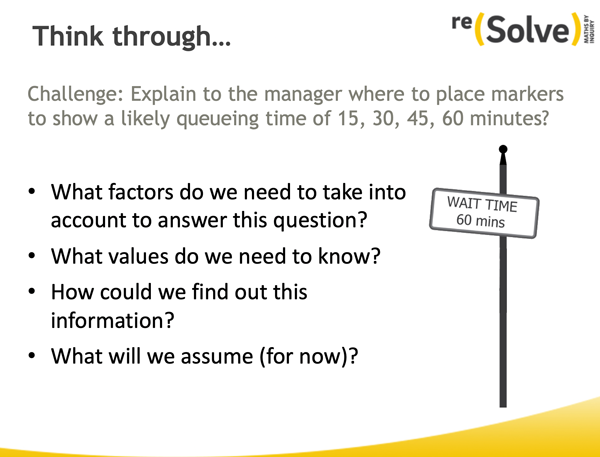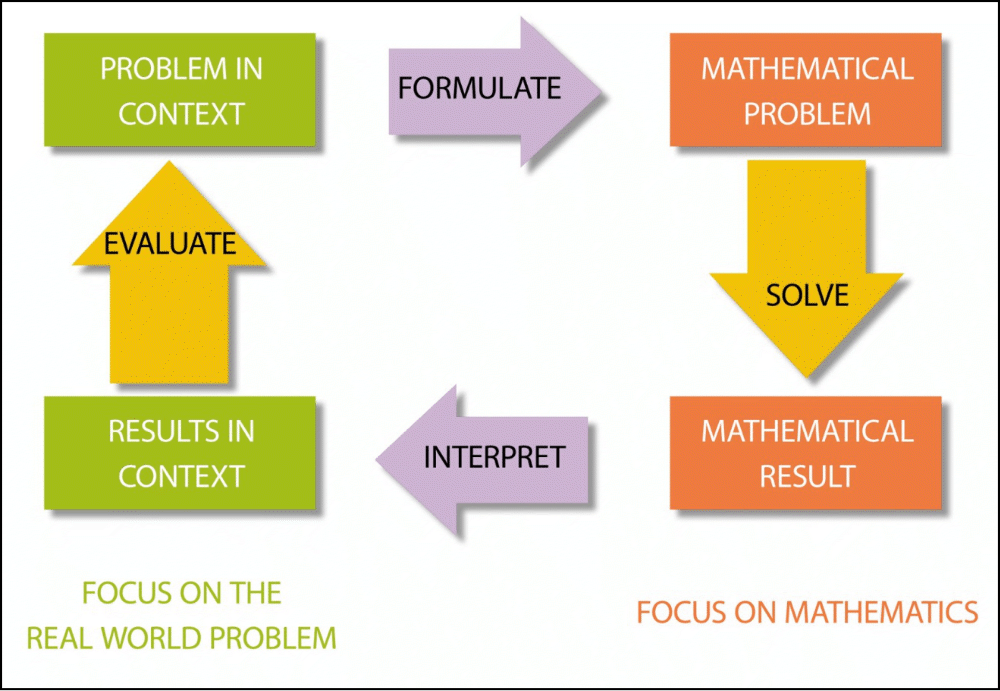30 Design Strategies and Tactics from 40 Years of Investigation
Appendix: Further information and examples
Process-focused lessons

Link to materials
Most problem solving or modelling lessons focus on understanding the problem situation, going through the various phases in the now-familiar modelling diagram: understanding the situation, formulating an approach and creating a model, transforming it to produce explicit solutions, interpreting them and the insights they provide, evaluating the latter in the context of the situation, and either going round the loop again to improve the model or, finally, communicating the results.
While reflecting on what you are doing is integral to this process, the Australian reSolve project decided to go further and asked the Shell Centre team to design a suite of lessons for a Special Topic with an explicit focus on modelling processes. The aim is to provide deeper insights as metacognitive support to help transfer modeling skills to other problems. The outcome is a set of five units each taking about five lessons.
From the first unit – Introduction to Mathematical Modelling:
“This unit is designed to help students acquire a deeper understanding of mathematical modelling and the key processes involved. Through engaging with the modelling of two familiar queuing situations – traffic jams and waiting in line at a theme park – they develop an overview of modelling, captured in a diagram of the mathematical modelling cycle. The diagram is introduced as a structuring device for all the units of mathematical modelling. Its purpose is essentially metacognitive: to guide students through mathematical modelling endeavours and to highlight the special demands of each of its phases.”

reSolve materials courtesy Australian Government Department of Education.
Reproduced under Creative Commons Attribution 4.0 International (CC BY) licence.
Subsequent units develop this style of thinking in the following problem contexts:
Pricing for Profit, Packaging Designer, Cornering, and How Risky is Life?
Materials can be freely downloaded from the reSolve website. The Teachers Guide for the Introduction to Modelling unit gives a good overview of the approach, in particular the adaptive expertise that teaching problem solving or modelling requires.
Links to materials:
- reSolve – Introduction to Mathematical Modelling
- https://www.resolve.edu.au/mathematical-modelling-introduction?lesson=1666